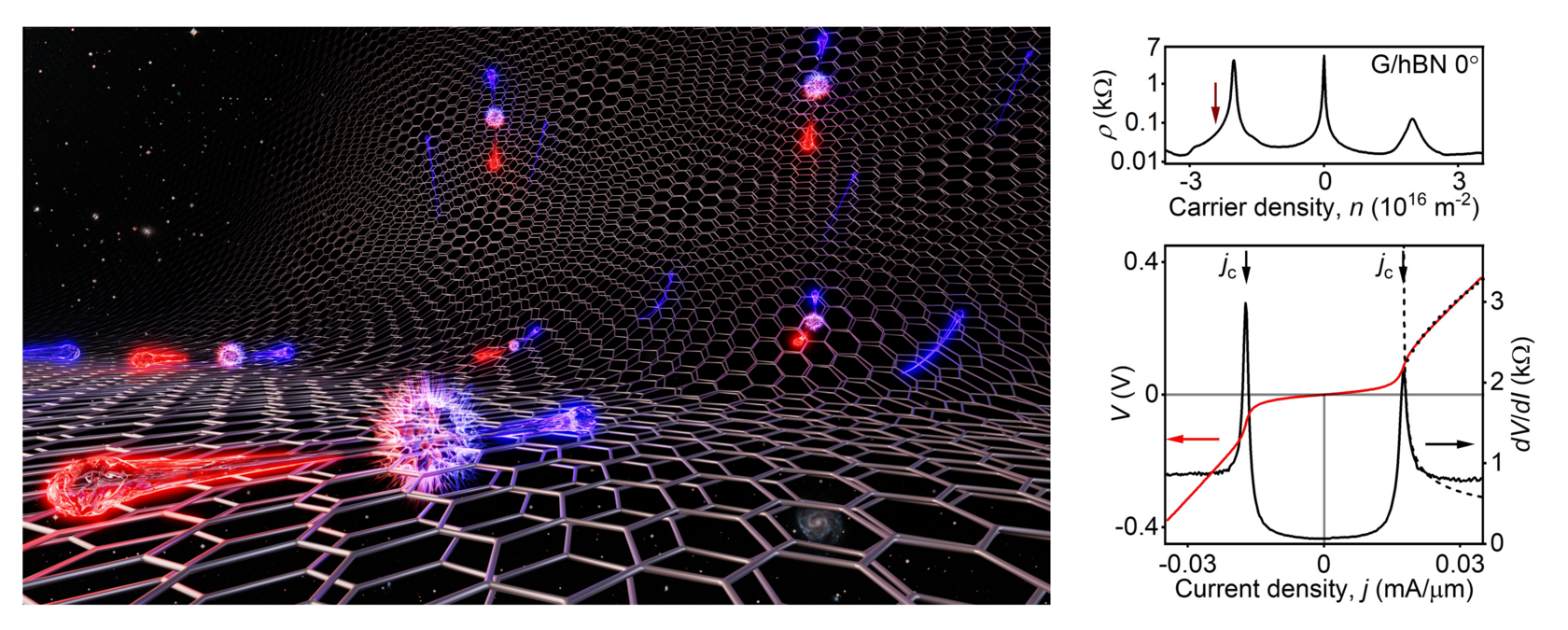Non-linear electronic properties, which emerge when you increase the current or voltage bias through your novel material, are extremely important for many modern functional electronic devices. However, the response of most materials under elevated bias is rather trivial, simply defined by the Joule heating caused by the increased current.
Fortunately, the situation is rather different in superlattices, where additional spatial periodicity reduces the size of the Brillouin zone, leading to a more intriguing response. In such materials even moderate voltage and current density can result in a significant shift of the Fermi surface in momentum space. The interesting situation arises once such shifted Fermi surface crosses special points, such as the border of the Brillouin zone, the neutrality point, or the van Hove singularity.
In our recent work, we studied the high-bias electron transport in novel moire superlattices, where graphene layers were either aligned with hexagonal boron nitride or twisted on a small angle relative to each other. In our experiment, we observed that high bias results in stunning superconducting-like I-V curves, which exhibit a switch-like behavior when the Fermi surface crosses the neutrality point in momentum space. More importantly, such behavior originates from the exotic physics of the Schwinger particle-antiparticle creation effect, which was predicted around the 1950s but has never been observed in real life due to the enormously strong electric field required to observe this effect in a space vacuum. In our experiment, we found that the same particle-antiparticle creation is responsible for the superconducting-like I-V curves observed in our experiment, and our results have provided important proof of concept for this unconventional phenomenon.
- A. I. Berdyugin et. al. , Measuring Hall viscosity of graphene’s electron fluid, Science, 364 (6436), 162-165, (2019)
Fortunately, the situation is rather different in superlattices, where additional spatial periodicity reduces the size of the Brillouin zone, leading to a more intriguing response. In such materials even moderate voltage and current density can result in a significant shift of the Fermi surface in momentum space. The interesting situation arises once such shifted Fermi surface crosses special points, such as the border of the Brillouin zone, the neutrality point, or the van Hove singularity.
In our recent work, we studied the high-bias electron transport in novel moire superlattices, where graphene layers were either aligned with hexagonal boron nitride or twisted on a small angle relative to each other. In our experiment, we observed that high bias results in stunning superconducting-like I-V curves, which exhibit a switch-like behavior when the Fermi surface crosses the neutrality point in momentum space. More importantly, such behavior originates from the exotic physics of the Schwinger particle-antiparticle creation effect, which was predicted around the 1950s but has never been observed in real life due to the enormously strong electric field required to observe this effect in a space vacuum. In our experiment, we found that the same particle-antiparticle creation is responsible for the superconducting-like I-V curves observed in our experiment, and our results have provided important proof of concept for this unconventional phenomenon.
- A. I. Berdyugin et. al. , Measuring Hall viscosity of graphene’s electron fluid, Science, 364 (6436), 162-165, (2019)

